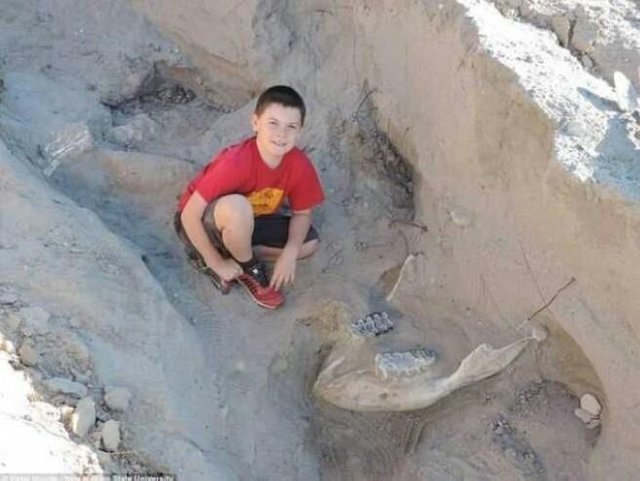 A part of ancient fossils was again discovered. This time a 9-year-old boy named Jude Sparks accidentally discovered a prehistoric skeletal Stegomastodon skeleton that is very rare in the Las Cruces desert of New Mexico, USA.
A part of ancient fossils was again discovered. This time a 9-year-old boy named Jude Sparks accidentally discovered a prehistoric skeletal Stegomastodon skeleton that is very rare in the Las Cruces desert of New Mexico, USA.
Actually, the discovery occurred in November 2016. But the fact is only revealed this month.
"When I was running, I stumbled on something that stood out from the ground," said Sparks who is 10 years old at Live Science on Thursday (7/20/2017).
"My face landed next to my lower jaw, I looked further and there was another piece of ivory," he continued.
Upon learning of the discovery was a fossil, the Sparks family contacted Peter Houde directly; Professor from New Mexico State University. He made sure the fossil bottom was 1.2 million years old and well protected.
The Stegomastodon is a kind of elephant, but not a mastodon although it looks similar and its existence is relatively new. The creature lived on Earth around the last few million years and may even become a human game.
This may be the only complete second skull found in New Mexico. In 2014, a man also found a 3 million-year-old Stegomastodon skeleton at Elephant Butte Lake State Park in New Mexico.
Although Stegomastodon looks very similar to mastodon, both are in different family groups. "American mastodon, Mammut americanum is a mammutid and in different family groups," says Professor Ross MacPhee of Vertebrate Zoology at the American Museum of Natural History in New York City.
Physically, they will look very similar to primitive proboscideans. Scientists unearted fossilized jaws and two pieces of ivory in the fall. Then in May, Sparks and his team of students and professors dug up the skull.
Houde took months to get permission to excavate the site and obtain the necessary chemicals to preserve the skull.
The jaw weighed about 120 lbs (54 kilograms), while the whole skull was about a ton of actual size it was a light weight for such a large bone. "That means the animal is about the same size as an Asian elephant but with a rather sturdy leg," Houde said.
As soon as they took the skull off the ground, the team plastered it with plaster and wire. A front end loader lifts the skull onto a truck to be brought back to the university.
The skull and tusk will be studied and reconstructed which can take years. Chances are, the fossils will be on display in the museum.